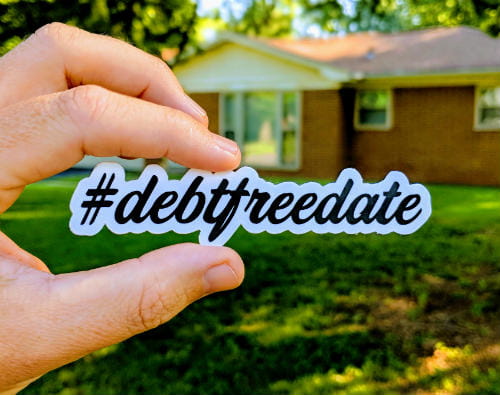Debt Management Plans vs. Filing for Bankruptcy
If you’re overwhelmed with debt, something probably needs to change. It may be that you need outside help to break through and start making progress.
Debt management plans (DMP) and bankruptcy are two very powerful tools designed to help financially stressed consumers get out of debt, but they work very differently. If you’re trying to decide between starting a DMP or filing for bankruptcy, here are some key things to know.
Neither is free, but bankruptcy is usually much more expensive
There’s no fully free way to get out of debt, but when you’re weighing your debt relief options, cost is probably a major consideration. Debt management plans and both forms of bankruptcy (Chapter 7 and Chapter 13) come with a variety of fees and costs.
For a DMP, you’ll usually have to pay a set-up at the beginning of the program, as well as a monthly fee to the agency administering your plan. The one-time set-up fee will change depending on the agency you’re using, but it’s often somewhere between $25 and $75. The monthly fee is determined by the rules in your state of residence, but it’s usually either a small percentage of your monthly creditor payments, a standard fee based on the number of accounts on your plan, or a just simple, flat fee.
The average debt management plan fees at MMI, for example, are $35 for account set-up, and $24 a month.
Filing for bankruptcy is a much more complicated process and the costs (at least initially) are much higher. Beyond filing fees and the cost for mandatory counseling and education courses, it’s recommended that you work with an attorney when filing for bankruptcy. As a result, the process can cost upwards of $4,000.
Chapter 7 bankruptcy wipes away most debts, but you may not qualify
When it comes to what happens to your debts, a debt management plan is pretty straightforward:
- The credit counseling agency works with your creditors to reduce your interest rates and waive some creditor fees.
- You pay the agency administering your plan, who then pays your creditors on your behalf.
- The included accounts are paid in full, usually in less than five years.
Chapter 13 bankruptcy is somewhat similar - your debts are put into a structured repayment program that’s usually scheduled to be completed in three to five years.
Chapter 7 bankruptcy is probably what most people think of when they hear the word “bankruptcy.” Chapter 7 includes the discharge (or elimination) of all included debts.
It’s never guaranteed, however, that your bankruptcy will be approved. You’ll essentially need to prove that the bankruptcy is necessary and that you can’t reasonably manage your debts on your own. That’s not to say that you shouldn’t try - bankruptcy can be a lifesaver for those who desperately need to start over. If you think you may be a borderline case, however, a debt management plan may be a better fit.
You can cancel a debt management plan at any time
A debt management plan isn’t a loan and the DMP administrator doesn’t become your creditor. If at some point in time you decide that you no longer want to stay on the DMP, you can cancel and pick a different path for your debt (which could include bankruptcy).
You probably wouldn’t want to cancel your Chapter 13 bankruptcy repayment plan, but it’s important to know that missing payments could cause your case to be dismissed, which would end your plan. At that point, your debts would no longer be eligible for discharge, which would essentially put you back at square one.
You may need to sell non-exempt property as part of a Chapter 7 bankruptcy
Chapter 7 is far and away the more popular of the two types of bankruptcy. Unlike Chapter 13, which involves setting up a repayment plan as a condition for eventual discharge of debts, Chapter 7 will require that you sell non-exempt property, with the proceeds going (at least in part) to your debtors.
This means that you’d be allowed to keep your home, your car, and any other items deemed essential. Non-exempt assets would include (among other things):
- Second home
- Second vehicle
- Recreational vehicles (boat, etc.)
- Stocks and other investments
- Cash and savings
- Heirlooms and collectibles
The second chance you can get with bankruptcy is likely worth the tradeoff, but it’s an important aspect that’s unique to bankruptcy.
You need income for a debt management plan and Chapter 13 bankruptcy to work
Debt management plans and Chapter 13 bankruptcy are both essentially structured repayment plans, so neither will work if you don’t have at least some income to work with.
With a DMP, you’ll work with a nonprofit credit counselor to review your budget and determine what kind of repayment plan you can afford. With a Chapter 13 bankruptcy, the repayment plan is based primarily on your disposable income (that is, the amount of money in your budget not going toward essentials).
If you don’t have any income and don’t anticipate having income for the foreseeable future, you may be better suited for a Chapter 7 bankruptcy.
A debt management plan is usually much better for your credit
Any repayment plan will have an impact on your credit, but bankruptcy in particular has a fairly catastrophic impact on the future of your credit score. No matter which chapter you file, you should expect your score to drop at least some amount after filing. Chapter 7 bankruptcy stays on your credit report for 10 years, while Chapter 13 sticks around for seven years. As time goes by, those negative marks will hurt you less and you, but it will take time to rebuild your credit.
With a debt management plan, you can typically expect your score to drop slightly at the beginning of the plan. This is because the included creditor accounts are closed, which can drop your score. As you maintain your DMP, however, your score will usually go up. The average MMI client, for example, sees their score increase by over 60 points in the first two years.
Of course, if your credit score is already low and using credit again isn’t something you see yourself worrying about in the coming years, it may not make that big of a difference.
Final Verdict: Bankruptcy is a more challenging way forward, but if you’re deeply underwater and trying to protect your home and other essential assets, it may be the right way out. A debt management plan, on the other hand, is cheaper and simpler to start. It’s also easier to quit if you want to try something else.
Still unsure which option is best for you? Complete a confidential, online budget analysis. You'll receive personalized recommendations and an estimated DMP payment to help you decide, all for free and with no obligations.













